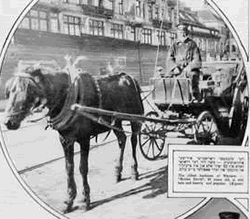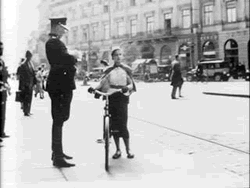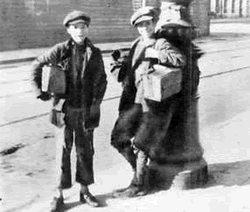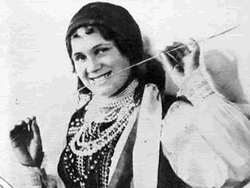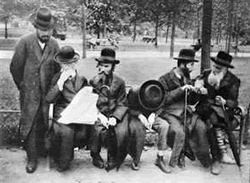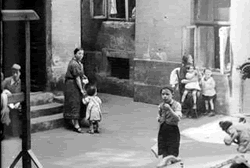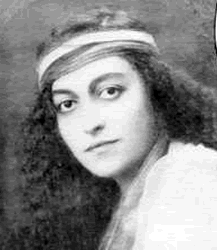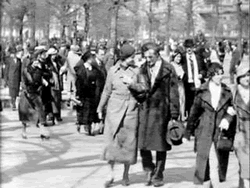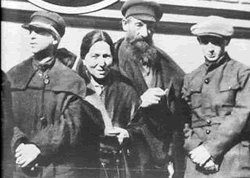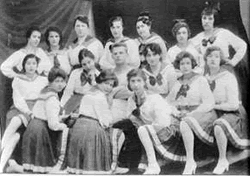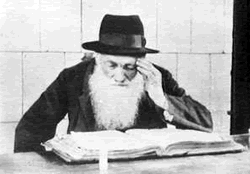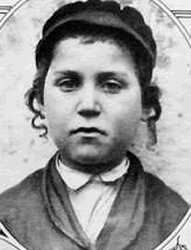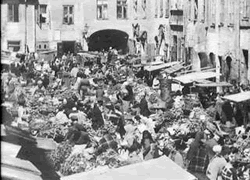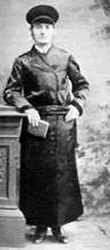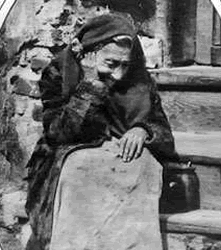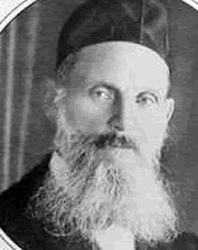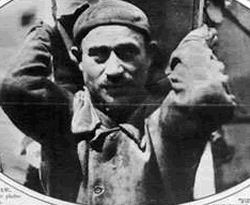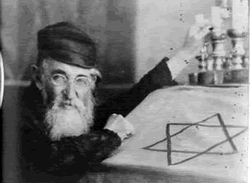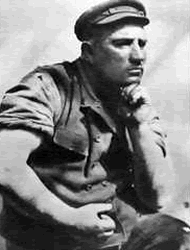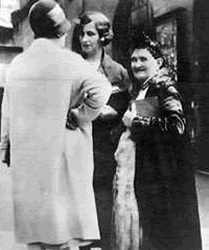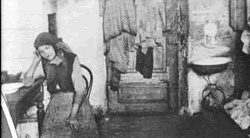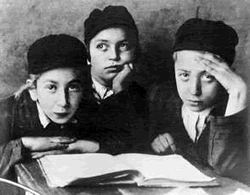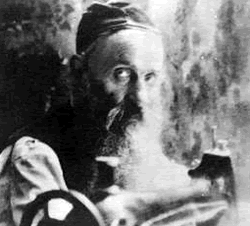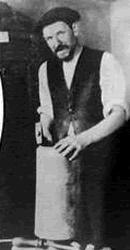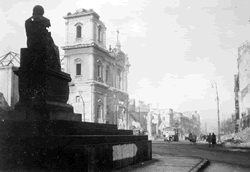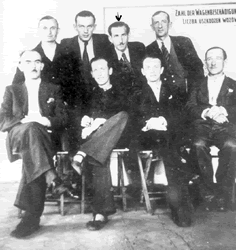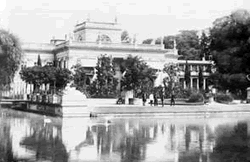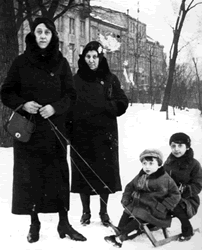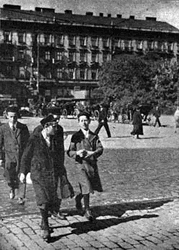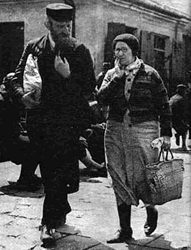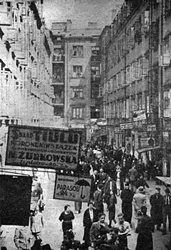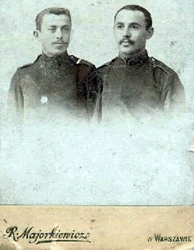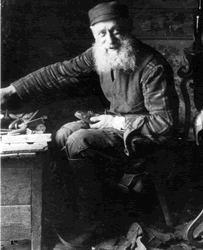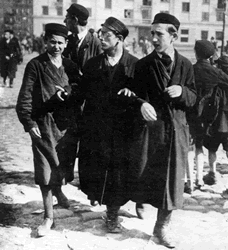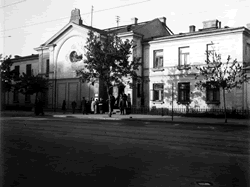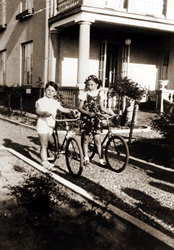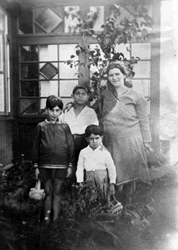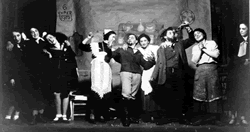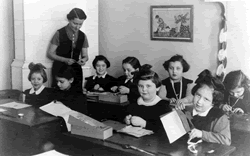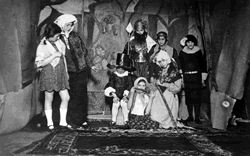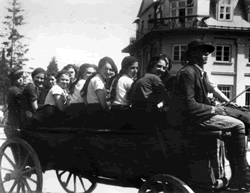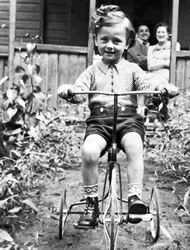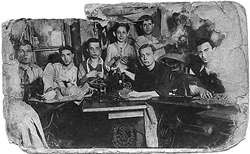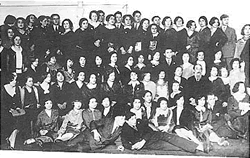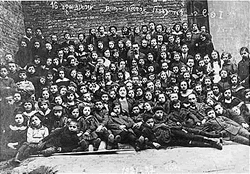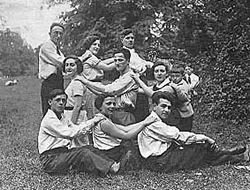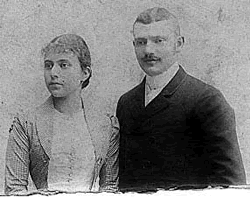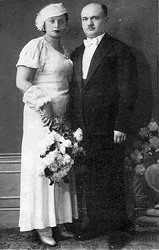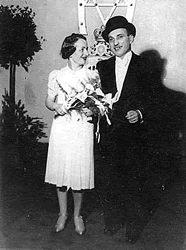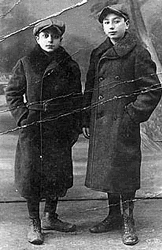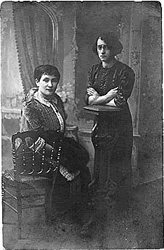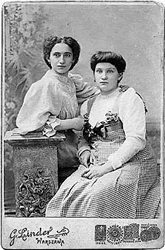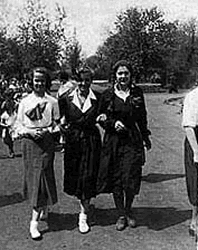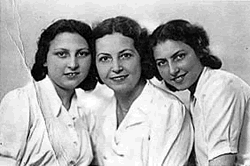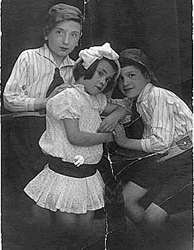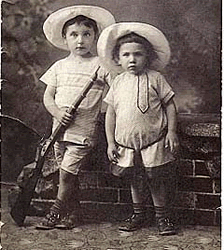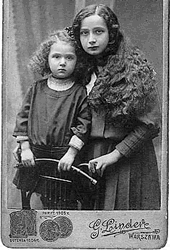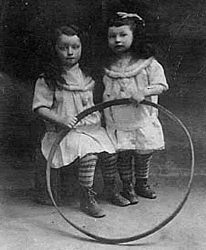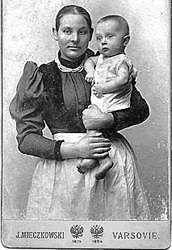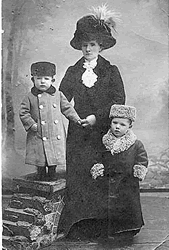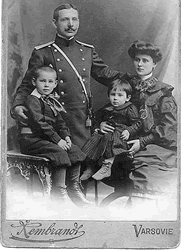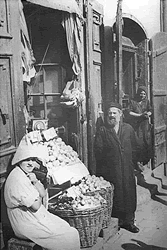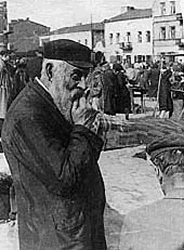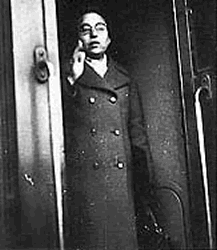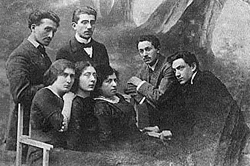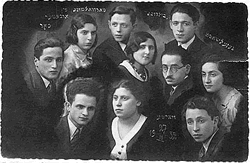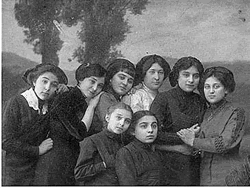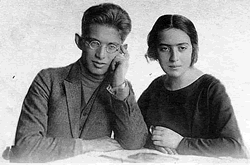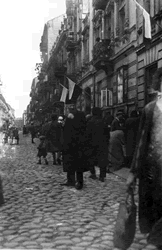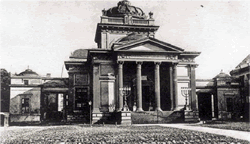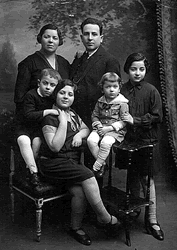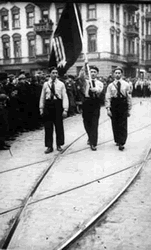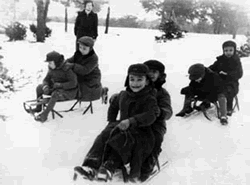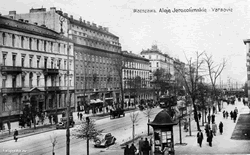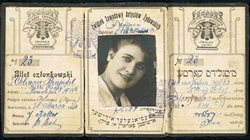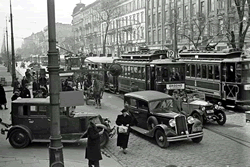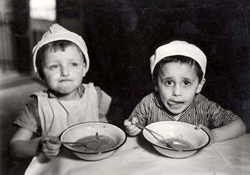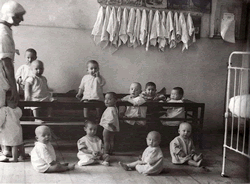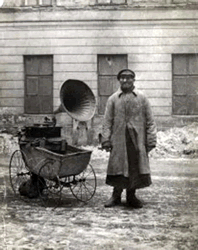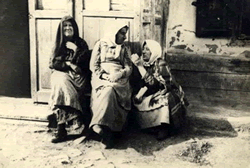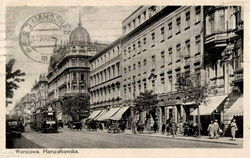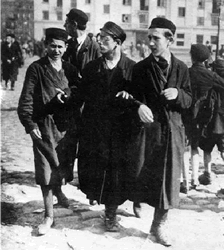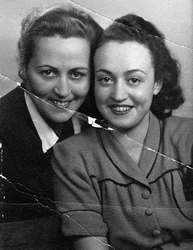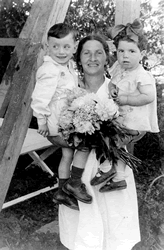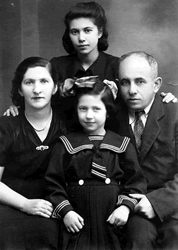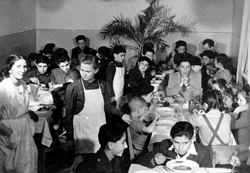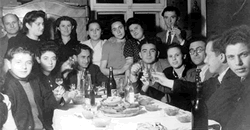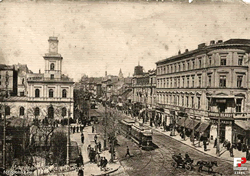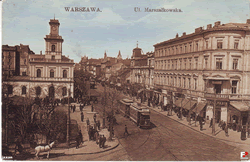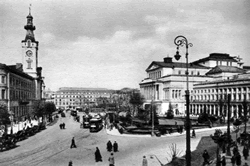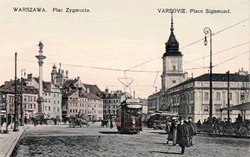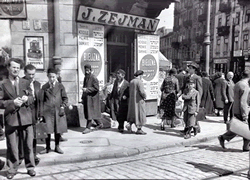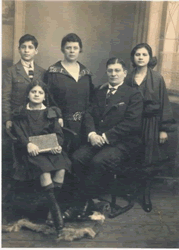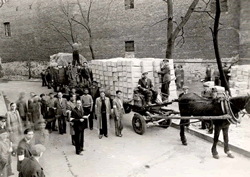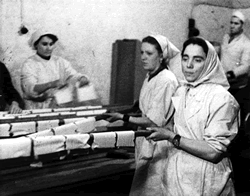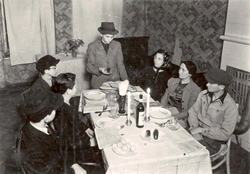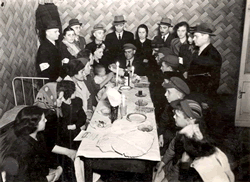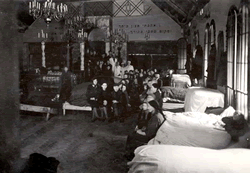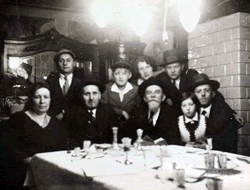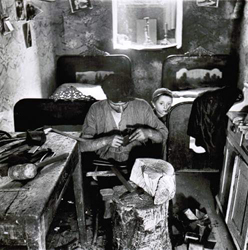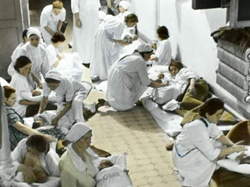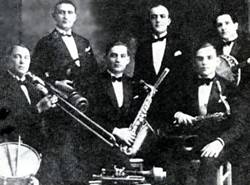|
#wrsw_os-1: pub. Sept. 14, 1924 Warsaw Kipnes, Menakhem |
#wrsw_us-2: 1930"s Warsaw Vishniac, Roman |
|
#wrsw_os-3: pub. Sept. 14, 1924 Warsaw Kipnes, Menakhem |
#wrsw_os-4: ('Jewish Daily Forward' caption in English:) "A Jewish beauty of |
|
#wrsw_os-5: pub. Nov. 16, 1924 Warsaw Kipnes, Menakhem |
#wrsw_os-6: Children and adults in the courtyard of an apartment house. |
|
#wrsw_os-7: Masha Pekhter. (Published under the heading "Portraits of Jewish |
#wrsw_os-8: Late 1930's Warsaw |
|
#wrsw_os-9: ('Jewish Daily Forward' caption in English:) "Jewish emigrants |
#wrsw_os-10: pub. Jan. 27, 1929 Warsaw Kacyzne, Alter |
|
#wrsw_os-11: ('Jewish Daily Forward' caption in Yiddish:) "Jew photographed |
#wrsw_os-12: pub. Feb. 10, 1929 Warsaw |
|
#wrsw_os-13: ('Jewish Daily Forward' caption in Yiddish:) "Old City in Warsaw. |
#wrsw_os-14: 1880's Warsaw |
| #wrsw_os-15: ('Jewish Daily Forward' caption in Yiddish:) "A poor Jewish woman |
#wrsw_os-16: pub. June 2, 1929 Warsaw |
#wrsw_os-17: ('Jewish Daily Forward' caption in Yiddish:) "A Warsaw Jewish |
#wrsw_os-18: pub. Oct. 13, 1929 Warsaw Kacyzne, Alter |
#wrsw_os-19: ('Jewish Daily Forward' caption in English:) "A striking study of avigorous Jewish porter of Warsaw." |
#wrsw_os-20: pub. Oct. 13, 1929 Warsaw Kacyzne, Alter |
#wrsw_os-21: ('Jewish Daily Forward' caption in Yiddish:) "A picture of Jewish |
#wrsw_os-22: pub. Nov. 10, 1929 Warsaw Kacyzne, Alter |
#wrsw_os-23: pub. Nov. 17, 1929 Warsaw Kacyzne, Alter |
#wrsw_os-24: pub. Nov. 17, 1929 Warsaw Kacyzne, Alter |
#wrsw_os-25: A picture postcard of a monument in Warsaw to the astronomer |
#wrsw_os-26: Jewish survivors |
#wrsw_os-27: Palace on the lake in Lazienki Park. Not far from the palace is a |
#wrsw_os-28: Pictured are Chaya Nortman (center), her daughter Dvora (left), and Date: Circa 1930 |
#wrsw_os-29: |
#wrsw_os-30: |
#wrsw_os-31: I believe Photo WRSW OS-31 is a view of the famous Nalewki Street, noted for the number of Jewish establishments. |
#wrsw_os-32: |
| #wrsw_os-33: |
#wrsw_os-34: Warsaw, 1928 |
| #wrsw_os-35:
|
#wrsw_os-36: Cousins from Warsaw at their summer home. |
#wrsw_os-37: The Tenenbaum family |
#wrsw_os-38: |
#wrsw_os-39: |
#wrsw_os-40: |
#wrsw_os-41: |
#wrsw_os-42: Lova Warszowczik |
#wrsw_os-43: A tailor's shop at 70 Niska Street in Warsaw, 1935 |
#wrsw_os-44: A reunion of graduates of Elementary School No. 49 at 9 Brzeska Street, Warsaw, 1936. In the first row from the top, standing from left, are: 5. - Mietek Albrecht, 6. - Don, 7. - Zosia Szmelcyngier (she left for France before the War, where she owned a sweater factory), 8. - Mendelson, 10. - Orlinska (the one with the white collar), 11. - Izaak Wajsbrot, our Polish language teacher, 12. - Renia Stalik (I met her in 1941 in Bialystok, starving, with a child at her breast), 13. - Sznajderman (he survived the war), 14. - Jadwiga Polkowska, 15. - Maria Frydman (lives in Warsaw), 16. - Kotlarz (he survived the war in Spain, died in Israel), 17. - Don, 20. - Hornblas, 21. - Losicer, 22. - Komar (the only one of the class who forced her way through the Jewish quota was accepted into university and graduated in Polish studies just before the war, only to perish soon after in the ghetto), 23. - Bronka Zuraw. |
#wrsw_os-45: The First People's School of the "Worker Thatch" Association in Warsaw, at 16 Muranowska Street, 1921 |
#wrsw_os-46: The Tajblurns from Warsaw. Amongst them are Eli Tajblurn, who was killed during the Ghetto uprising, and his wife Rza. http://motlc.wiesenthal.com/site/pp.asp?c=jmKYJeNVJrF&b=479273 |
#wrsw_os-47: Rza Horwitz, my great grandaunt, born in Warsaw, and beside her Mr. Hilsum, her husband, a French Jew. She left with him for Paris. They had three sons." Marek Beylin, Warsaw |
#wrsw_os-48: Wedding photograph of Frajda Fajgenbaum and Samuel Grinberg, Warsaw, September 22, 1935. |
#wrsw_os-49: The wedding of Bronka Karas and Mietek Szydlower, Warsaw, probably 1938. They perished during the Holocaust. Their daughter lives in Warsaw |
#wrsw_os-50: The Slonka brothers, Warsaw, the interwar period |
#wrsw_os-51: Lea Prywes with her sister Aniela Szpiro. Warsaw, 1908 |
#wrsw_os-52: Zlata Boms and Lea Prywes (pregnant), daughters of Chaim Rottenberg from Skryhiczyn. Warsaw, 1906. |
#wrsw_os-53: Janka Kon, Basia Rundo, Zosia Horowicz - classmates at the Jan Kochanowski Gymnasium, Warsaw. Photo taken June 2,1935 at the Zoo. Janka and Zosia perished in the ghetto |
#wrsw_os-54: Zofia Meglicka with Halina and Lila Klajman. Warsaw, 1943. "The Majmans were from Ldz; they were friends of my parents. In 1942 my parents took in Lila and Halina and had Aryan ID cards made out for them under the name Mierzwicka. Both girls were with us until October of 1944. We considered them members of the family, and they treated their 'aunt' as a mother. They both survived. Lila died in Uruguay in 1991, and Halina is living in Tel Aviv." Zdzislaw Meglicki, |
#wrsw_os-55: Jehuda, Ita, Szaja Prywes. Warsaw, 1916 |
#wrsw_os-56: Jehuda and Szaja Prywes. Warsaw, 1912 |
#wrsw_os-57: Bronka and Mina Blass. 1912 |
#wrsw_os-58: Frajda and Gina Fajgenbaum, Warsaw, 1915. "I was so ashamed of this photo... Next to beautiful Frajda - ugly me, my panties sticking out, you could see my underwear. Now, it's a remembrance of my sister, who was killed in the ghetto." Eugenia Gnoinska, Warsaw |
#wrsw_os-59: Jerzyk Rundo, son of Zygmunt , with Polish nanny, 1895. http://motlc.wiesenthal.com/site/pp.asp?c=jmKYJeNVJrF&b=479129 |
#wrsw_os-60: "I'm sending you a picture of my mother, Justyna Goldman, nee Goldberg. She died of natural causes in the Warsaw Ghetto. I was saved thanks to my brother-in-law, who was Aryan. This is the only photograph of my mother." Jzef Uszynski, Ldz |
#wrsw_os-61: Dr. Edmund Winawer with his wife Dora (nee Horowitz) and their sons Karol and Stefan (on his mother's lap). |
#wrsw_os-62: Warsaw, Mostowa Street comer of Freta Street, 1937 |
#wrsw_os-63: I send you a photograph found among keepsakes Ieft by my uncle, an amateur photographer. I suppose this picture might come from Vilnius, where my uncle lived before the War." Emil Mieszkowski, Warsaw -- http://motlc.wiesenthal.com/site/pp.asp?c=jmKYJeNVJrF&b=479051 |
#wrsw_os-64: Warsaw, the Gdansk Railway Station, 1970. Anna Lerman leaves for Israel |
#wrsw_os-65: Regina (Rywka) Szafran rests her hand on the shoulder of her sister Rza. Behind Rza is Ignacy (Israel) Feldman. The photograph was taken on October 19, 1912, probably in Otwock, where they spent Sundays away from Warsaw. Rywka was a teacher, and Israel was a bookkeeper. They married in 1918. She died in the Ghetto, and he and his son Marian survived the War in Russia. Marian Feldman still lives in Warsaw. |
#wrsw_os-66: Estera Slornka, nee Tajblum, among her friends. The inscription in Yiddish reads "The ,Bildung,, (Education) Society, Workers' Choir Board, Warsaw, February 27, 1932." |
#wrsw_os-67: These are the Minc sisters and their cousins or friends. In the foreground on the left, the youngest of the Minc sisters, Olga, my mother. Next to her, Dora, who lived and died in Moscow. Behind them, standing at the far left is Sara - she and her daughter survived the Vilnius Ghetto and German camps, and she died in Warsaw in 1975. Second from the right is the oldest sister, Guta. In 1924 she left for Russia, and died in Moscow in 1985. The picture was taken sometime between 1913 and 1915, when they still lived in Warsaw. Their parents moved here from Russia at the end of the last century, since under the Czar Jewish merchants weren't allowed to do business either in Moscow or in St. Petersburg." Maria Borkozvska-Flisek, Gdansk |
#wrsw_os-68: Jacek Goldman and his sister Wanda. Krakw, 1924. "My mother Wanda Meloch (nee Goldman) was killed in Bialystok after the Germans invaded in the summer of 1941. Jacek left the Warsaw Ghetto to join the partisans and nobody ever heard from him again. I received this photograph from my family in New York." Katarzyna Meloch, Warszawa |
#wrsw_os-69: |
#wrsw_os-70: |
#wrsw_os-71: |
#wrsw_os-72: Most of the family perished in the Shoa ( one son survived) |
#wrsw_os-73: May day in Warsaw 1930s |
#wrsw_os-74: |
#wrsw_os-75: |
#wrsw_os-76: |
#wrsw_os-77: |
#wrsw_os-78: |
#wrsw_os-79: |
#wrsw_os-80: |
#wrsw_os-81: |
#wrsw_os-82: |
#wrsw_os-83: Yeshivah students on Nalewki Street. Warsaw, 1928 |
#wrsw_os-84: Apolonia Starzec with her sister. for the story go to http://www.centropa.org/photo/apolonia-starzec-her-sister-irena-kirszenbaum-0 |
#wrsw_os-85: Gustawa Birencwajg with children from a nursery |
#wrsw_os-86: The Birencwajg family |
#wrsw_os-87: An Orphanage´.Gustawa Birencwajg second from the left.to read her story; http://www.centropa.org/photo/gustawa-birencwajg-holidays also http://www.centropa.org/photo/gustawa-birencwajg-her-nursery-pieszyce |
#wrsw_os-88: |
#wrsw_os-89: |
#wrsw_os-90: |
#wrsw_os-91: |
#wrsw_os-92: |
#wrsw_os-93: |
#wrsw_os-94: Yaacovsky family Warsaw |
#wrsw_os-95: Distribution of matzah by the ZSS in Warsaw during Passover, Poland, 1940. |
#wrsw_os-96: Baking matzah in the Warsaw Ghetto, Poland. |
#wrsw_os-97: A man reciting a blessing over a cup of wine at a Passover Seder held at 6 Leszno Street at a refugee shelter organized by the Osternhilfswerk relief committee in the Warsaw Ghetto, Poland |
#wrsw_os-98: A man can be seen breaking a matzah during a Passover Seder held at a refugee shelter run by the Osternhilfswerk relief committee at 6 Leszno Street in the Warsaw Ghetto, Poland |
#wrsw_os-99: Jews at a Passover Seder at Dzielna 7 in the Warsaw Ghetto, Poland |
#wrsw_os-100: Warsaw, Poland, Buchalter family (family of the submitter), during the Passover Seder, 1933. |
#wrsw_os-101: Photo by Roman vishniac |
#wrsw_os-102: 1939 |
#wrsw_os-103: The Petersburski Gold Orchestra composed immortal tango "Ostatnia niedziela" and waltz "B??kitna chusteczka" and of Arthur Petersburski, who was forced to entertain the Treblinka guards before his death there. |
#wrsw_os-104: |
|
|
|
